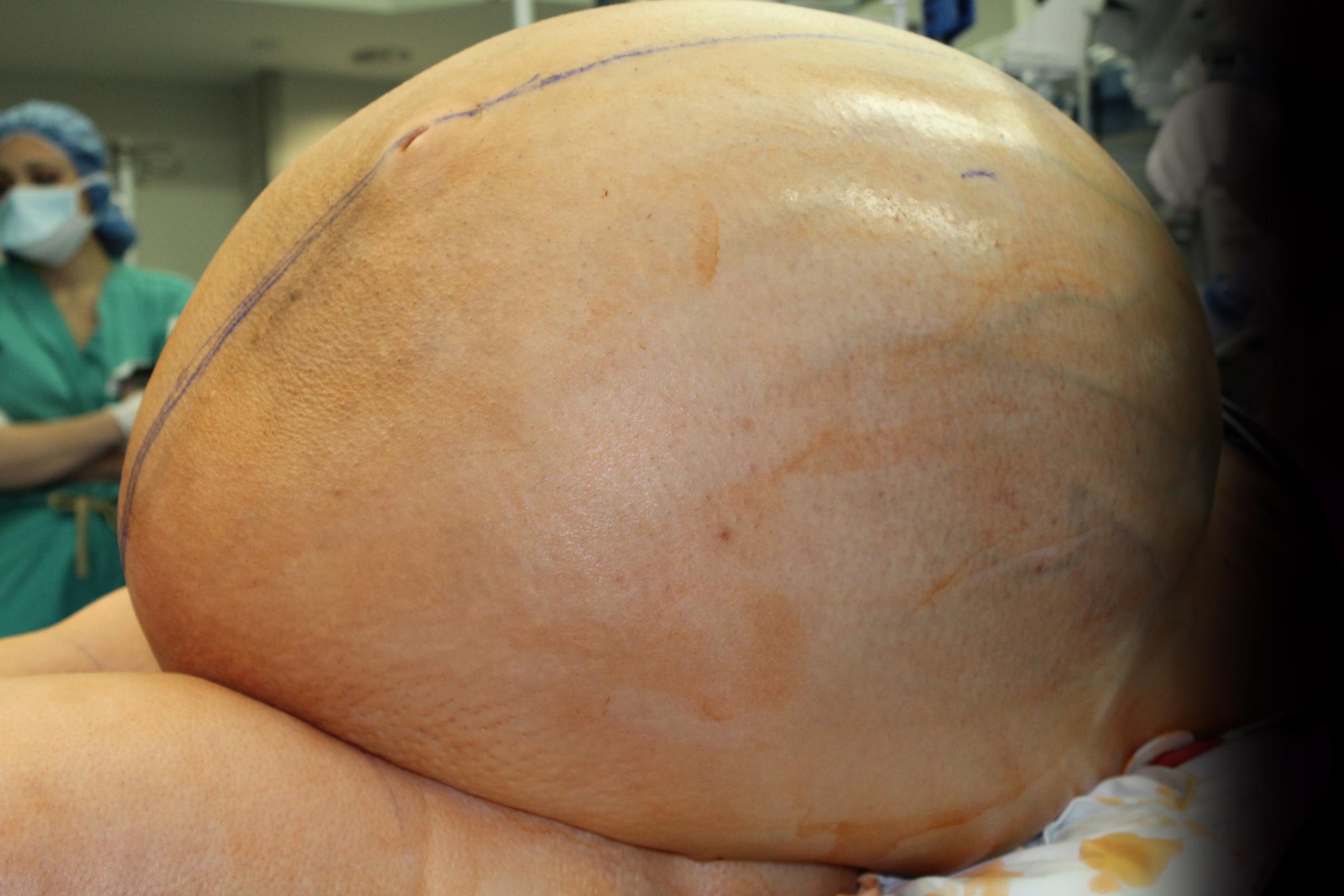Dr. Vaagn Andikyan, a gynecologic oncologist at Connecticut’s Danbury Hospital, had never seen anything like it.
A 38-year-old woman had been referred to Andikyan after rapid weight gain — nearly 10 pounds a week over the course of two months — prompted her to seek medical attention. By the time she got to the hospital, a three-foot-wide, 132-pound ovarian tumor was taking up her entire abdomen. The tumor wasn’t cancerous, but it had caused her legs to swell so much that she couldn’t walk, leaving her wheelchair-bound. She was severely malnourished because of its position over her digestive tract, and her intestines had been pushed into her chest. She was desperate for relief.
“I was very cautious. Nobody wants their patient to have a negative outcome,” Andikyan says. “What gave me a second wind was that we wanted to help the patient. When you have this internal feeling that you’re helping, positive thinking helps you to achieve your goal.”

In the end, a team of almost 25 Danbury clinicians — including surgeons, cardiologists, gynecologists, physician’s assistants, anesthesiologists, nurses, operating room technicians and office staff — worked together to develop a treatment plan. On Valentine’s Day 2018, doctors carried out a five-hour surgery, which involved removing the tumor and reconstructing the patient’s abdomen all in the same procedure.
The outcome, Andikyan says, surpassed anyone’s hopes. Not only was the tumor removal successful, but the team was also able to spare her uterus, one ovary and most of her fallopian tubes, preventing early menopause and preserving her ability to get pregnant. Had they waited even a week or two longer, Andikyan says, the patient might not have made it.
Because the tumor was benign — as is common with very large masses — the patient is not expected to have any lingering health issues, Andikyan says. “She’s totally fine. She should be back to her baseline,” Andikyan says. “I’m very proud of our hospital.”
The tumor is among the largest ever recorded. Though a few ovarian tumors weighing more than 300 pounds have been reported in the past, most are significantly smaller. A 50-pound tumor, Andikyan says, would typically be considered very large, making a 132-pound lesion exceedingly rare.
“No one knows, really, why certain benign tumors get so big,” Andikyan says, adding that Danbury’s laboratories are conducting genetic tests on the tumor. “Maybe in the future we’ll know why these benign tumors get so big, so fast.”
More Must-Reads from TIME
- Donald Trump Is TIME's 2024 Person of the Year
- Why We Chose Trump as Person of the Year
- Is Intermittent Fasting Good or Bad for You?
- The 100 Must-Read Books of 2024
- The 20 Best Christmas TV Episodes
- Column: If Optimism Feels Ridiculous Now, Try Hope
- The Future of Climate Action Is Trade Policy
- Merle Bombardieri Is Helping People Make the Baby Decision
Write to Jamie Ducharme at jamie.ducharme@time.com